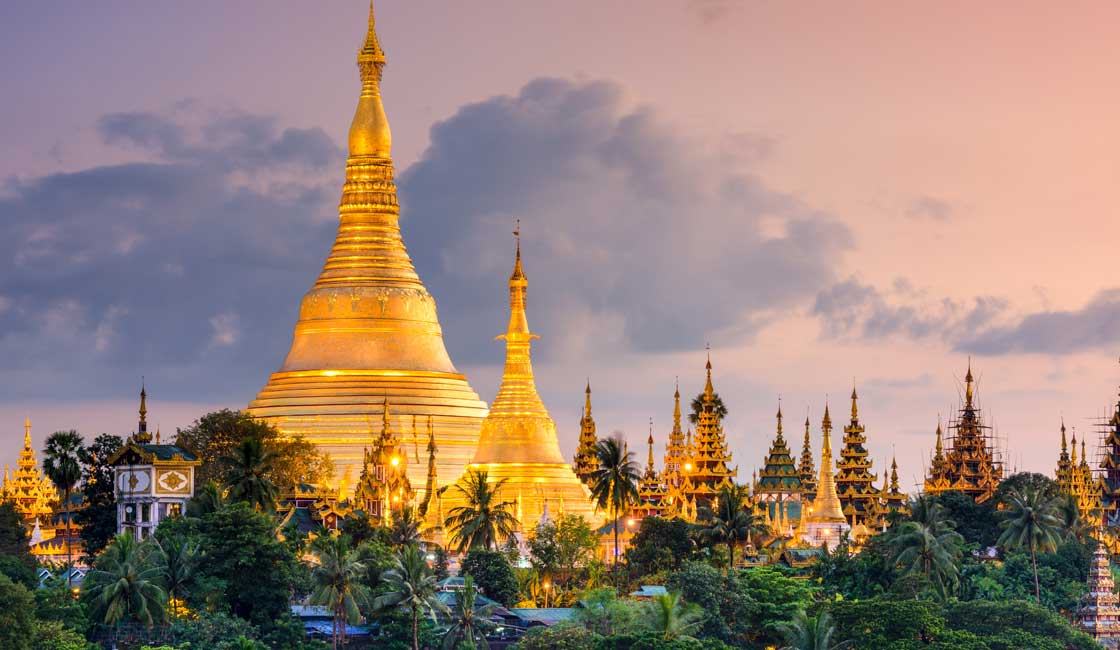
Formerly called Burma, Myanmar is a country full of mysterious cultural richness and natural beauties, despite going through many ordeals and hardships. Sharing borders with India, China, Thailand, and Bangladesh, Myanmar has multiple mountain ranges and a long coastline. Here is a list of all the top ten things to do in Myanmar.
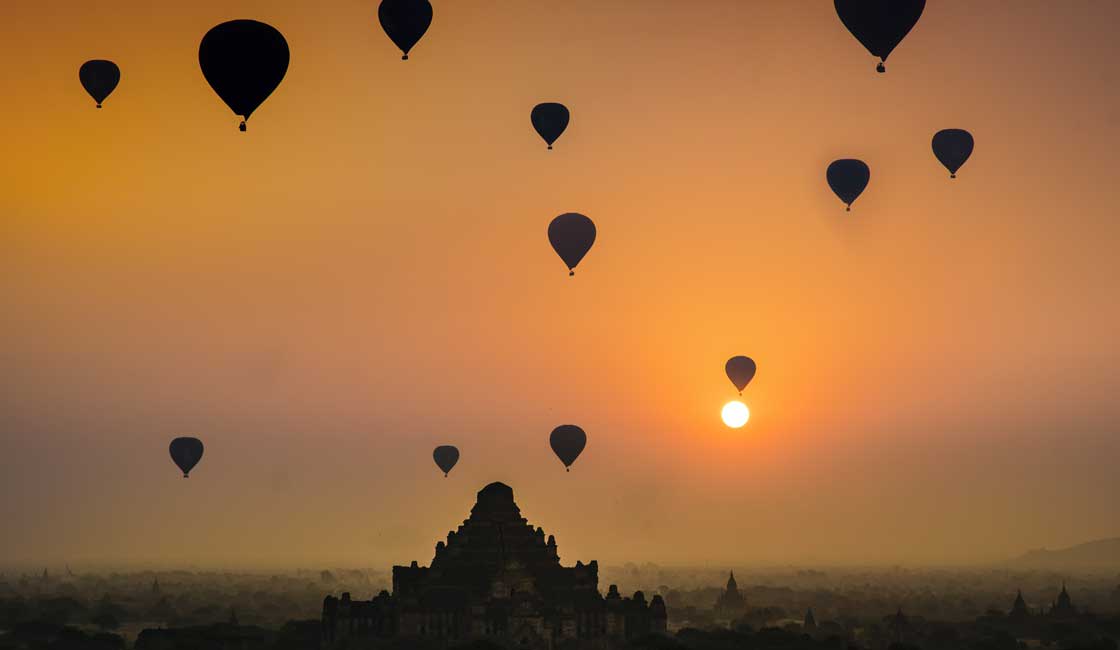
Balloons over Bagan
From the 11th through the 13th centuries, Bagan was the capital and cultural center of the Pagan Empire. Due in large part to the abundance of religious monuments, the city grew in size and grandeur and became a hub for religious and secular learning. During the heyday of Pagan, more than 10,000 Buddhist temples, pagodas and monasteries were constructed on the Bagan plain alone. To this day, there are more than 2200 temples and pagodas remaining, creating an otherworldly view when seen from above.
Start an unforgettable day in Bagan with a hot air balloon ride. You can watch the sunrise over the plains as the temples and pagodas below begin to glimmer in the early morning misty sunlight. A hot air balloon ride over Bagan is as mystical and wonderful as it sounds. When you come back down to earth, visit at least a few of the temples. Some of the important ones are the Bupaya, the Ananda Paya, and the Thatbyinnyu. The real fun, however, is in stumbling upon the lesser-known, almost hidden pagodas.
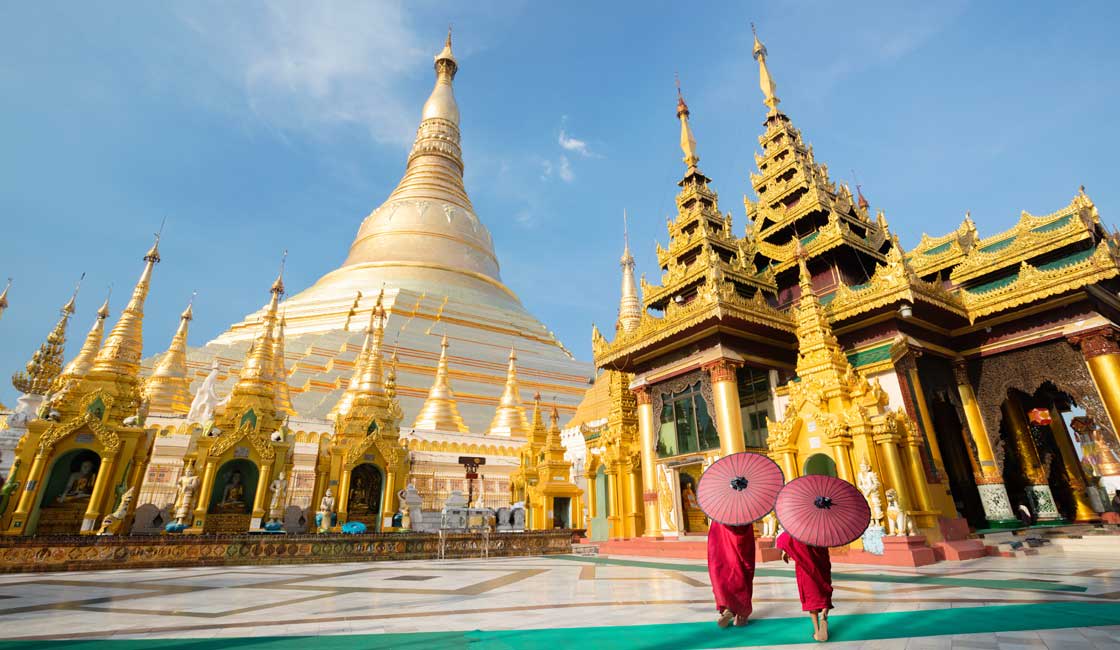
Shwedagon Pagoda
Yangon is the main commercial city of Myanmar and no trip here is complete without a visit to one of the most famous pagodas in the world. It is like the Eiffel Tower of Yangon, a massive golden icon that can be seen from most rooftops in the city. There are four entrances, each leading up a flight of steps to the pagoda’s platform, and as you climb up to the stupa, you can stop to have your fortune told and then buy offerings to the right shrines for good luck. There are also eight planetary posts, one for each day of the week (Wednesday is split in two). Burmese Buddhists will go to pray at the respective post where they were born.
Each planetary post is ruled by an animal—garuda for Sunday, tiger for Monday, lion for Tuesday, tusked elephant for Wednesday morning, tuskless elephant for Wednesday afternoons, mouse for Thursday, guinea pig for Friday and naga for Saturday. Locals walk around the stupa in a clockwise direction, making merit at any of the different shrines or praying for success at the Victory Ground where kings used to pray for triumph over their enemies. No sacred space in Myanmar contains as much history, culture and riches as the Shwedagon Pagoda.

Inle Lake
Visiting Inle Lake is one of the best things to do in Myanmar. This massive lake measures 13 miles from north to south, and six miles from east to west. All along the fringes of this ecologically rich watery expanse, you’ll find towns populated by the Intha ethnic community. Long adapted to living beside the waters’ edge, the Intha people ride boats to get from place to place, they cultivate floating farms, and they row long skinny boats with one leg while fishing on the lake.
Stay in a hotel on stilts near the Intha villages to enjoy the unique lakeside landscape, and see more of the local color by visiting the markets that rotate from village to village. Check out the shops selling locally-made silver, knives, and cigars, or seek spiritual solace at the Hpaung Daw Oo and Shwe Indein pagodas.

Mandalay Royal Palace
Mandalay Palace is the last royal palace of the last Burmese monarchy. It was built from 1857 to 1859 as a part of Mindon’s founding of the new royal capital city of Mandalay. The city was home to the ruling kings, and still retains echoes of its royal status. Its side streets ring with the sound of traditional craftsmen, from marble carvers to silversmiths to gold leaf makers. Sadly, World War II destroyed the resplendent Royal Palace at the heart of Mandalay.
A watchtower, the Royal Mint, and the Shwenandaw Monastery are all that’s left of the original, but the rest of the palace, reconstructed in the 1990s using modern materials, will still give you a glimpse of what life might have been like for Burma’s kings. The complex follows the traditional palace design inside a walled fort surrounded by a moat.
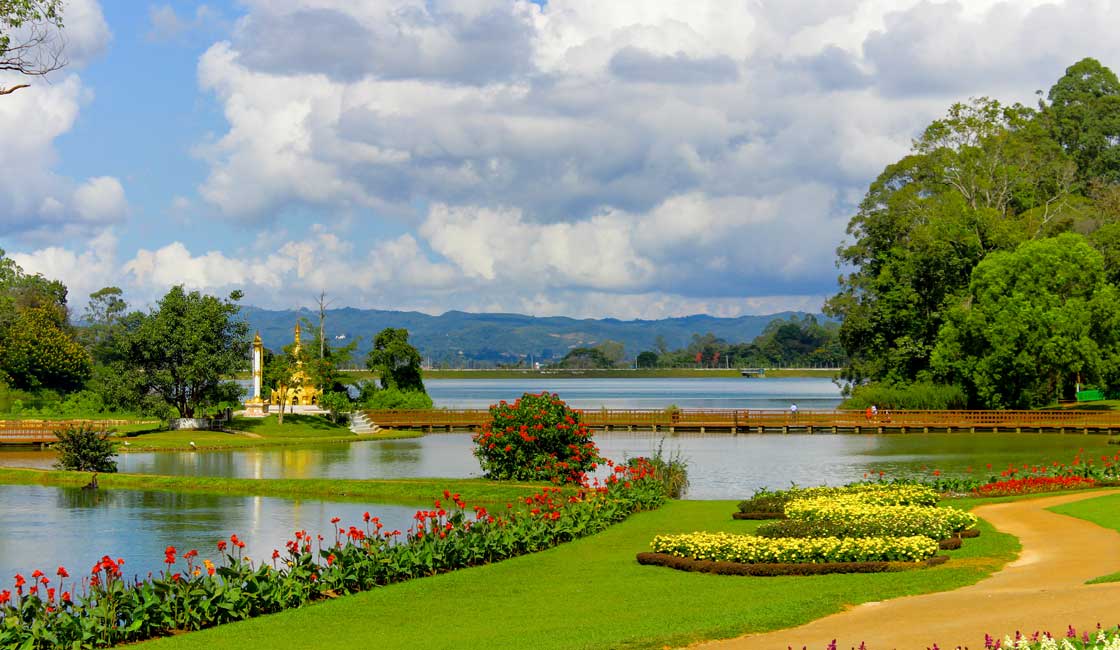
Kandawgyi National Gardens
In the days before air conditioning, the British Civil Service in Burma would spend the sweltering summers in the town they called Maymyo, now Pyin Oo Lwin. Its elevation of 3,500 feet above sea level meant that visitors would enjoy cool weather, tree-lined avenues and flowering gardens. The vast Kandawgyi National Gardens in the heart of the city, combine parkland and unspoiled forest; over 700 species of trees, 300 species of orchids, 70 species of bamboo and 20 species of roses bloom year-round in these Gardens. The Rose Garden is a major highlight; you can buy seeds here to plant at home. A four-hour train journey connects Mandalay to Pyin Oo Lwin.
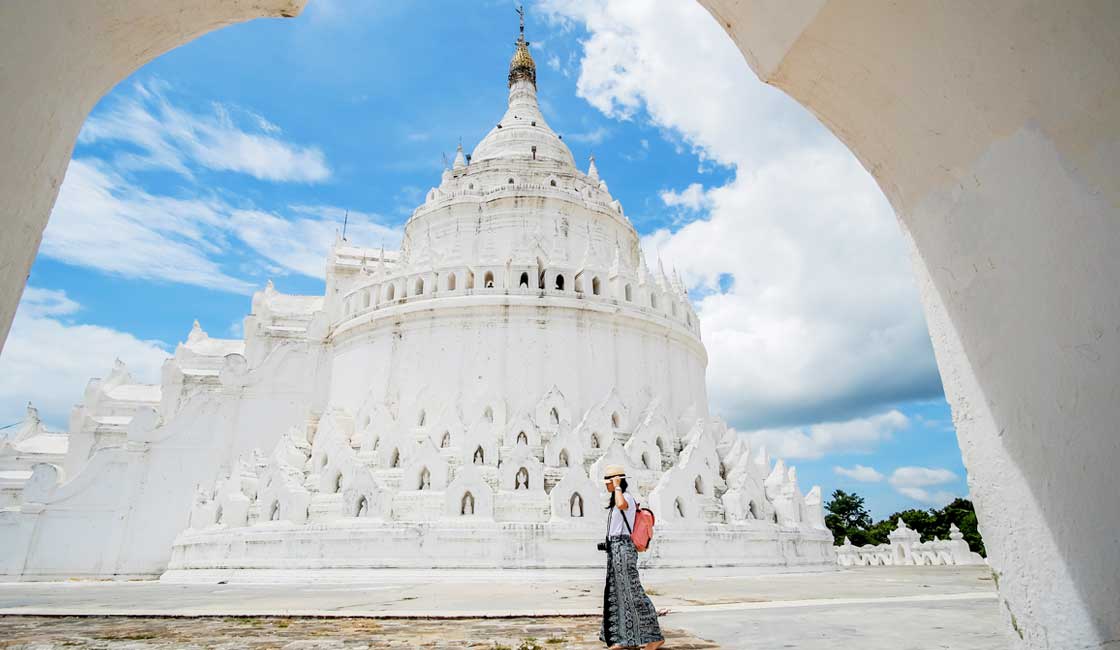
Hsinbyume Pagoda
This photogenic pagoda, situated on the northern side of Mingun on the western bank of the Irrawaddy River, is a true labor of love. The all-white pagoda was dedicated to the memory of Bagyidaw’s first consort and cousin, Princess Hsinbyume who died in childbirth. The pagoda is faithful to Burmese pagoda design norms, and the main stupa on the top is surrounded by many wave-like terraces.

Kalaw hills
Trek through Kalaw, the hill station in Shan State just minutes from Inle Lake. Here, local families offer homestay accommodations, which include home-cooked local meals. You will have the opportunity to see a completely different side of Myanmar, away from pagodas and dust. Multiple trekking companies arrange tours that are relatively inexpensive.

Circular Train in Yangon
Riding the circular train in Yangon is another great way to experience local life and see the real Myanmar. This inexpensive journey will take you through noisy railway stations, laid-back towns, past smelly garbage dumps and aromatic street food stalls.
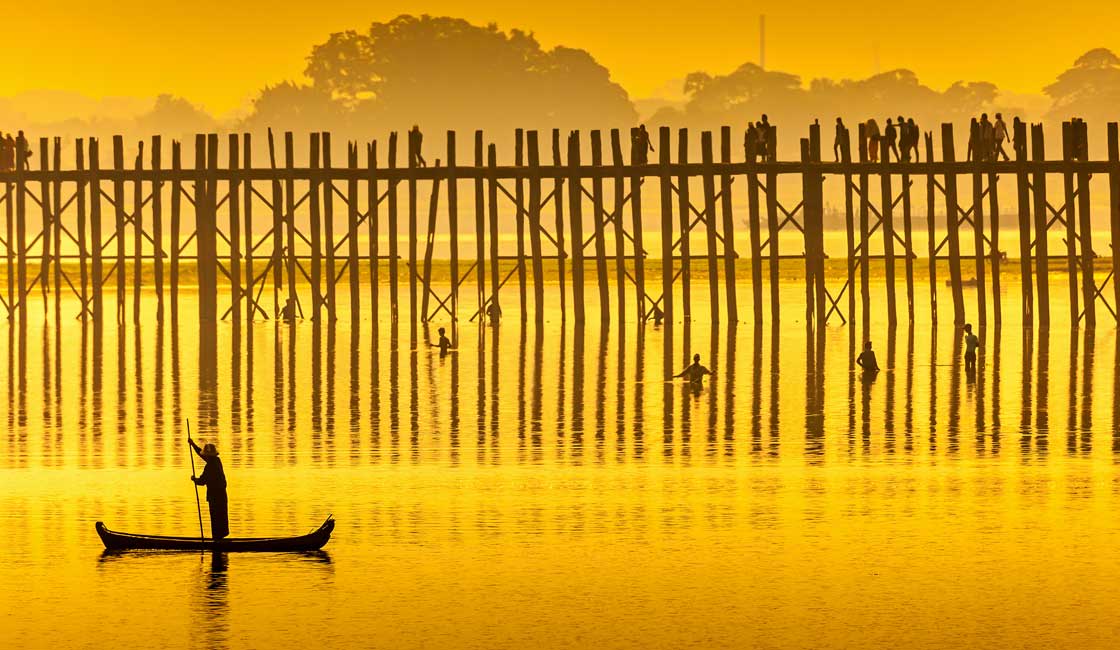
U Bein Bridge
U Bein Bridge is the world’s longest and oldest bridge, erected in 1850. It is made of teak wood and feels quite rickety when you walk along it. The bridge runs three-quarters of a mile across Taungthaman Lake and offers an awesome sunset experience.
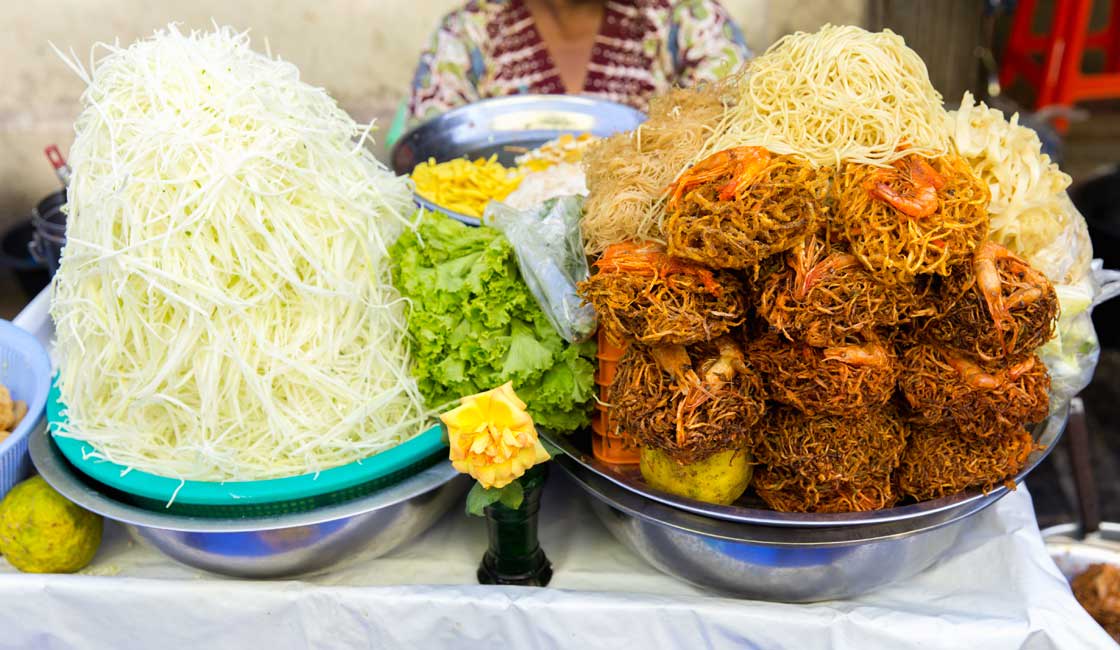
Scott Market street food
This market is a major bazaar located in Pabedan township in central Yangon. Here you’ll find yourself on cobblestone streets lost in hundreds of stores and shops selling Burmese handicrafts, jewelry, accessories, artworks and clothes. This is also the best place in Yangon to buy famous Burmese items such longyi and Shan paper umbrellas.
While Rainforest Cruises aim to provide accurate and up-to-date information, we make no representations as to the accuracy or completeness of any information herein or found by following any link on this site. Rainforest Cruises cannot and will not accept responsibility for any omissions or inaccuracies, or for any consequences arising therefrom, including any losses, injuries, or damages resulting from the display or use of this information.




